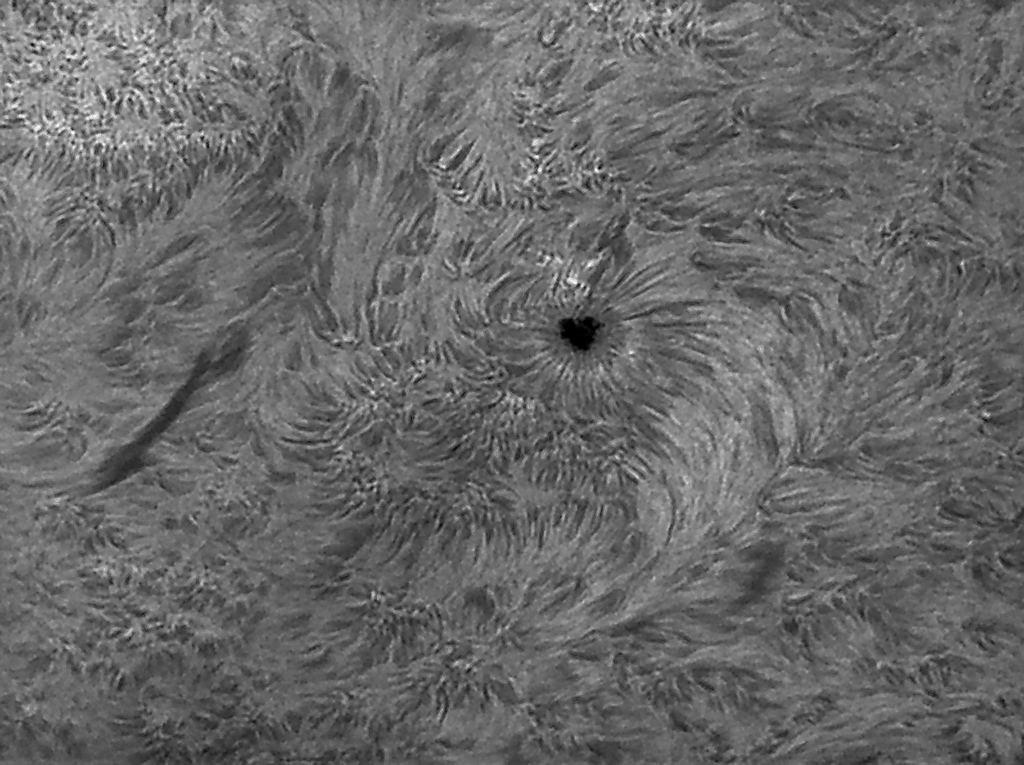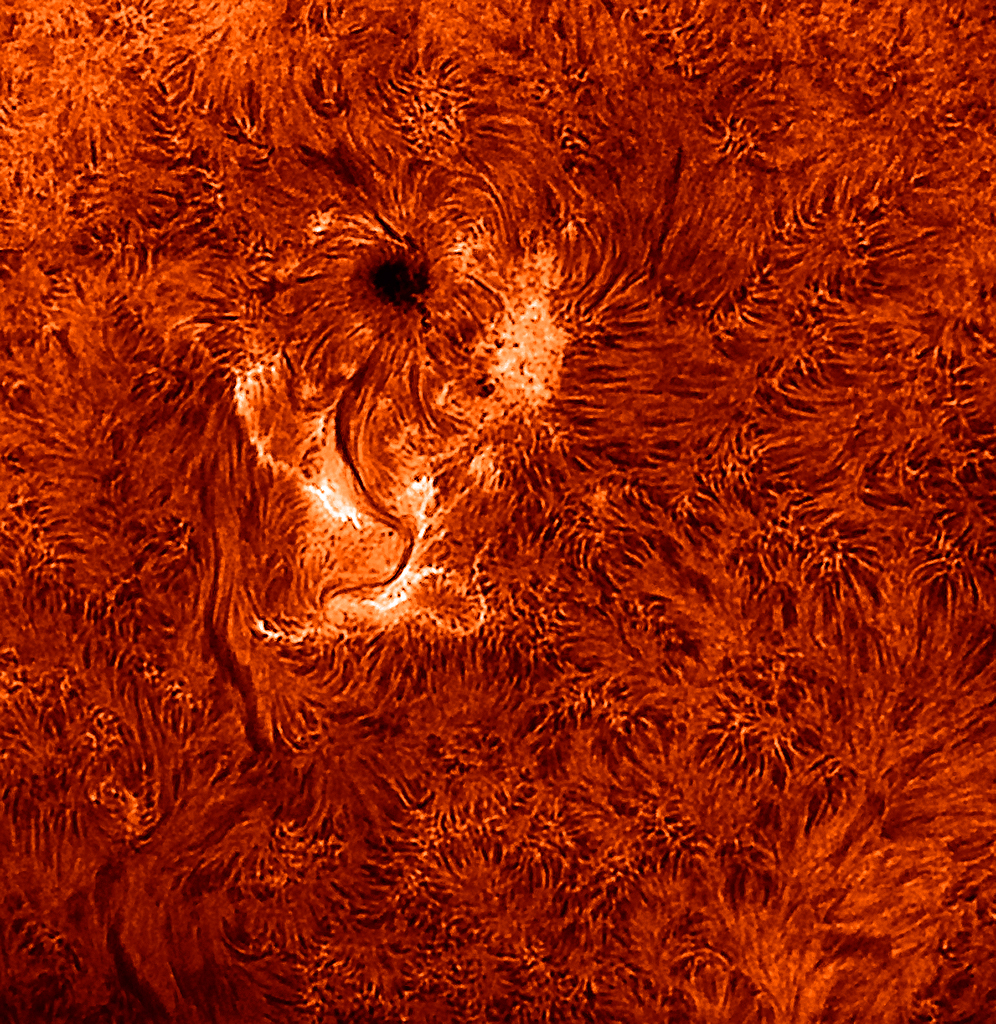|
Amy and I dropped a line from Polaris a few nights ago, and I marked an approximate meridian on the pavement of the cul de sac. (Note to self: err a little to the left when setting up based on those lines.) The Sun doesn't hit the part of the cds I like to use for sungazing until almost noon, but so far the seeing has been better than I am used to later in the day. The images below are typical of the most recent sessions. There hasn't been too much to photograph, so take these as representative of recent efforts (right click and "view image" to see 1024 pixel versions of these). The first photo is of lonely sunspot 1599 which follows more complex active region 1598 by a hundred thousand miles or so. AR1598 threw a couple of M flares and an X1 as it came into view a few days ago. It's quieted down since then, but it's far from dead. The three bottom images show plenty of B flares and a weak C flare lighting it up:
AR1599 (top) and 1598
When the air cooperates, as it did today, single 1GB clips seem to be plenty for good S/N, good resolution, and good tones. 125-150 frames suffice. Of course, under poorer seeing, it might take two or three 1GB clips to get that many clean frames. I still have to really work not to push the data so hard that the finished image is harsh / brittle / over-sharpened. The optical cement holding the repaired ERF together is as cured as it's ever going to be. The filter looks as if it should work just fine. I may try it out in the 90mm telescope — a few images made with and without the ERF should help to decide whether it's fatally flawed for use in the 152 when I am good and ready to wrestle that beast back into service.
:: top ::
|
© 2012, David Cortner



